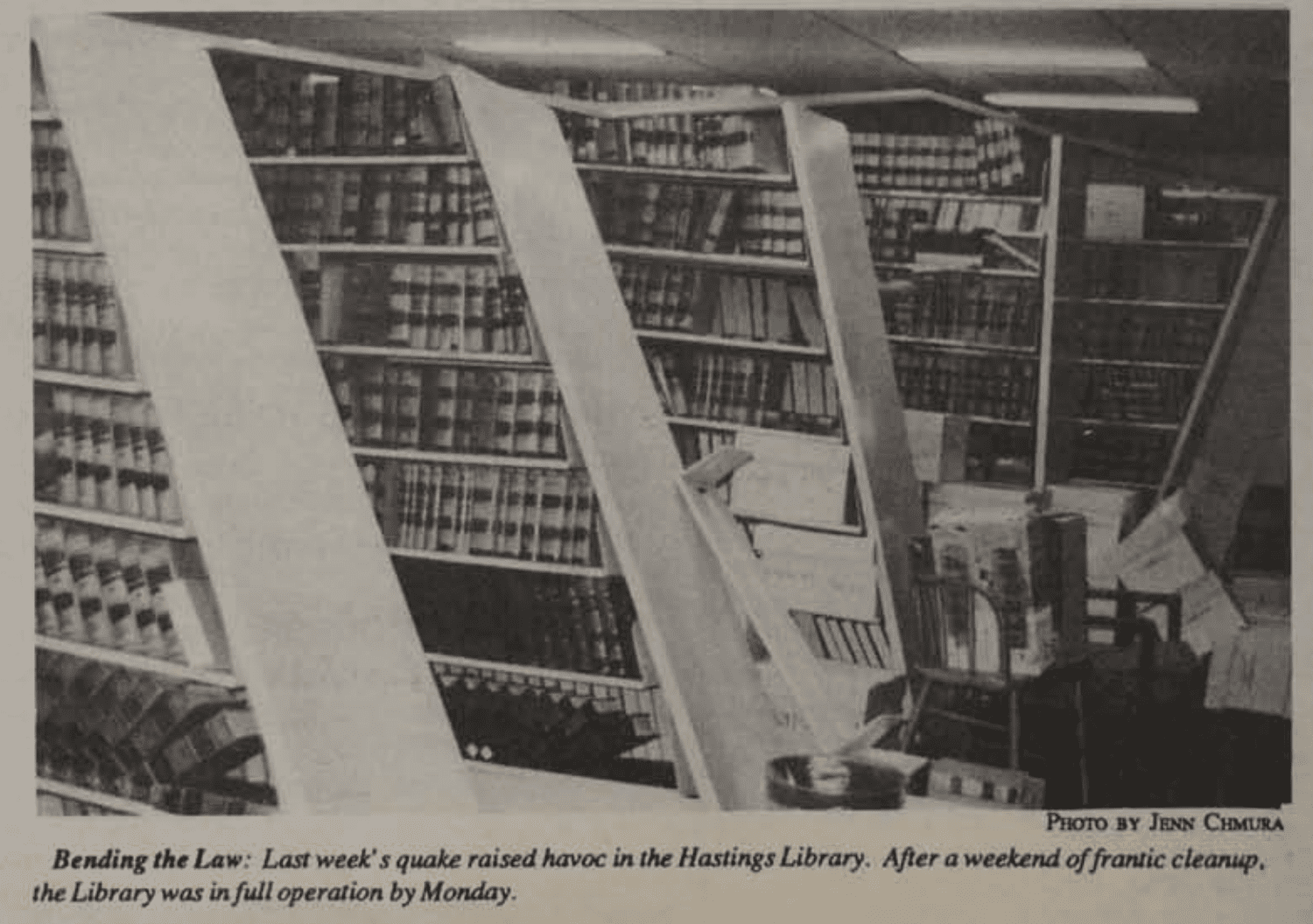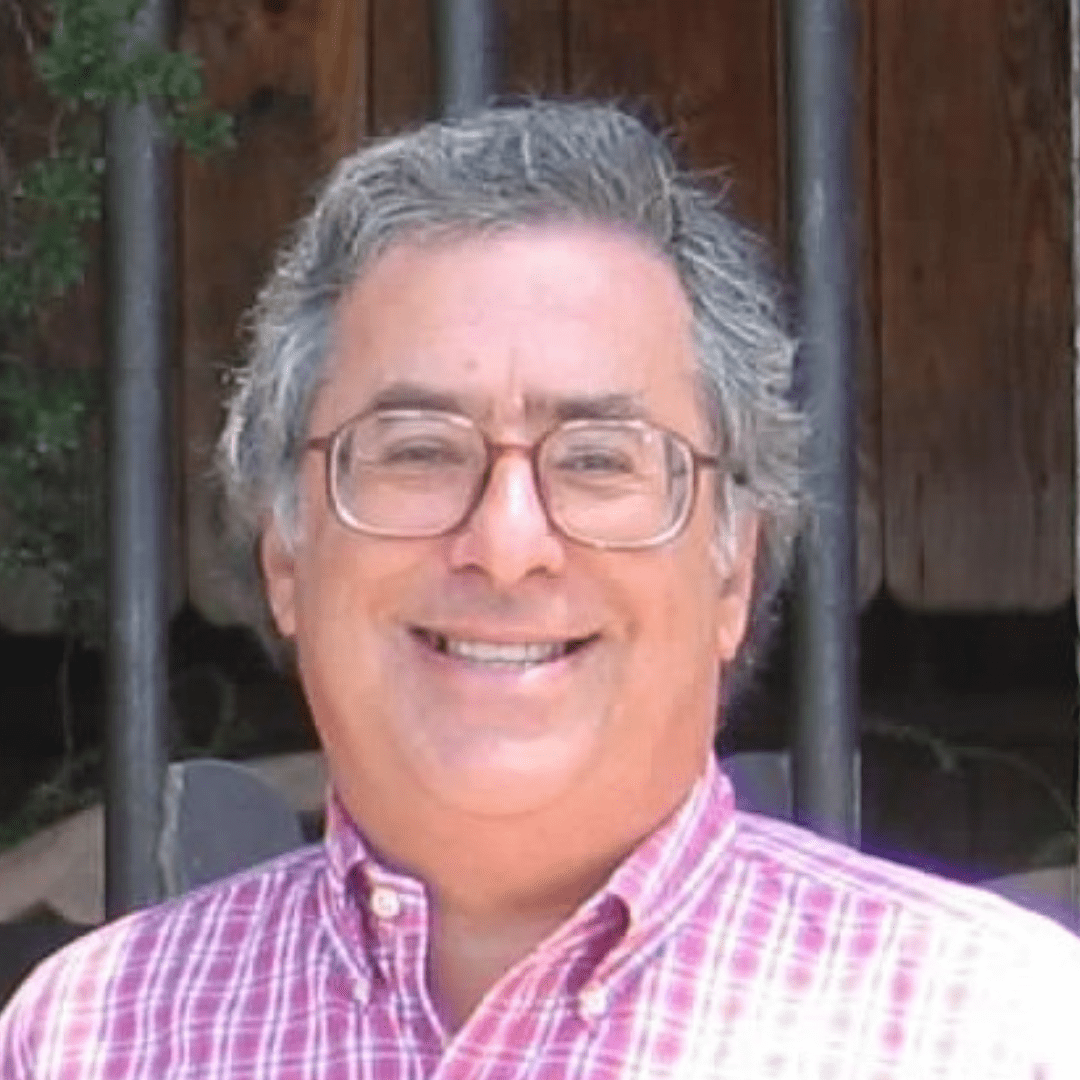Let the Record Show: Lessons in Casualty and Unity, Remembering the ’89 Earthquake

Bookshelves toppled like dominoes in UC Law SF’s 200 McAllister St. library during the 6.9-magnitude Loma Prieta earthquake in 1989. The shaking lasted 20 seconds and had a lasting impact on the College.
Thirty-five years after a 6.9-magnitude earthquake rocked the Bay Area and interrupted the World Series, UC Law SF faculty and alumni reflect on the events of Oct. 17, 1989.
Tax law Professor Steve Schwarz was teaching in the 198 McAllister St. building when the Loma Prieta earthquake struck at 5:04 p.m. that Tuesday. Ironically, he was lecturing on “sudden events” for casualty loss deductions when the room began to shake.
“One of the requirements was that the casualty had to result from a sudden event, like a tornado, hurricane, or . . . earthquake,” he said. “So I’m rambling on about the suddenness requirement and the earthquake occurs.”

Professor Steve Schwarz was lecturing UC Law SF students about the “sudden events” requirement for casualty loss tax deductions when a real-life sudden catastrophe occurred in the form of a 6.9-magnitude earthquake on Oct. 17, 1989.
Schwarz told students to get under their desks as the lights went out, and he ducked beneath a podium. He recorded an audio tape of his lecture that day for students who missed class to attend a “Battle of the Bay” World Series game between the Oakland A’s and San Francisco Giants. When listening to the tape, Schwarz said he was surprised at how calm and composed he managed to stay amid the tremors.
Meanwhile, across the street, two of the faculty’s newest professors—now Chancellor & Dean David Faigman and Dean Emeritus Leo Martinez–were chatting in Martinez’s office at 200 McAllister St. when the building started swaying.
“The shaking went on for what felt like a surprisingly long time,” Faigman said. “Books fell off the shelves. Lights went out, and the emergency lights came on.”
The shaking lasted approximately 20 seconds, according to the California Geological Survey. But many say it felt longer. Martinez and Faigman rode out the quake in a doorway, later realizing it wasn’t the safest option.
“In retrospect, we should have ducked under my desk,” Martinez said.
Martinez, unable to drive home to Oakland due to the collapse of a Bay Bridge panel, walked to Faigman’s Russian Hill home. The two saw ominous smoke rising from a building fire in the Marina District, where several structures that were built on unstable filled land had fallen.
Kelly Woodruff ’92, then a first-year student, was in her Tenderloin apartment with her father when the quake hit, knocking things off shelves and walls. She recalls the city’s eerie quiet, darkness, and a sense of unity as neighbors helped each other through the aftermath.
“There was a feeling of incredible bonding across the city,” she said. “Electricity was out everywhere. It was so dark. You could actually see stars in San Francisco.”
Three campus buildings, including the McAllister Tower that housed 300 students, suffered cracks and fallen plaster but no major damage. In the library, shelves toppled like dominoes, knocking law books to the ground.
Classes were canceled in the days immediately following the quake, but the College resumed normal operations within a week. Sullivan Professor David Levine, who served as assistant academic dean at the time, recalls that then Dean Tom Read was eager to get the law school back on track as quickly as possible.
While the main campus buildings fared well, four non-academic, college-owned buildings were severely damaged and later had to be demolished. One of the condemned buildings occupied the space where the Cotchett Law Center stands today at 333 Golden Gate Ave.
Faigman expressed confidence in the campus’s earthquake preparedness today, noting that the 200 McAllister St. building has undergone a full seismic upgrade, and the newer buildings at 333 Golden Gate Ave. and 198 McAllister St. were constructed to the highest seismic standards. The 24-story McAllister Tower, a nearly century-old structure, is currently undergoing a major seismic retrofit to ensure safety in future quakes.
Let the Record Show is an occasional series that showcases people, moments, and milestones from UC Law San Francisco’s past.